
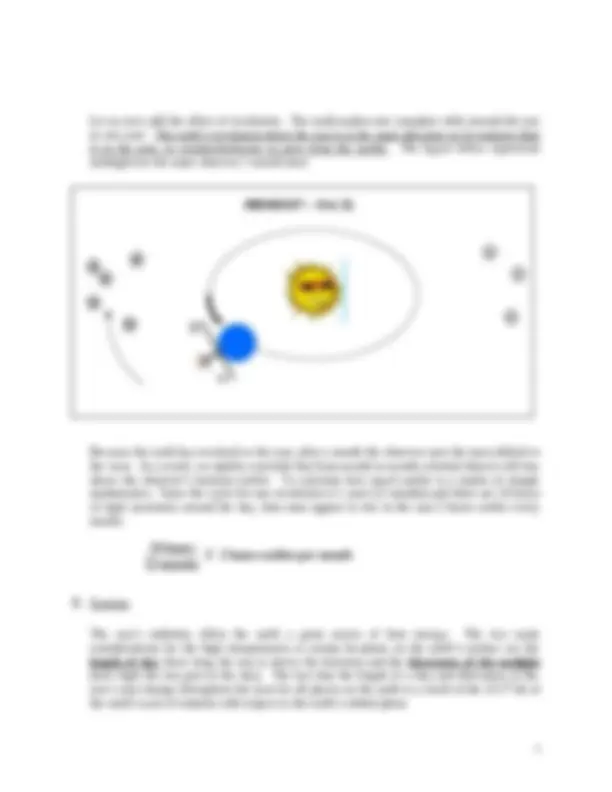
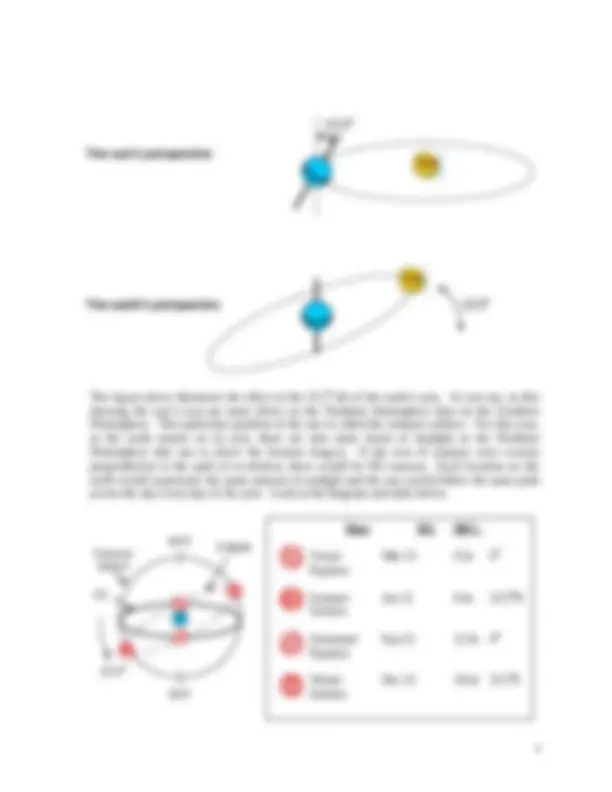
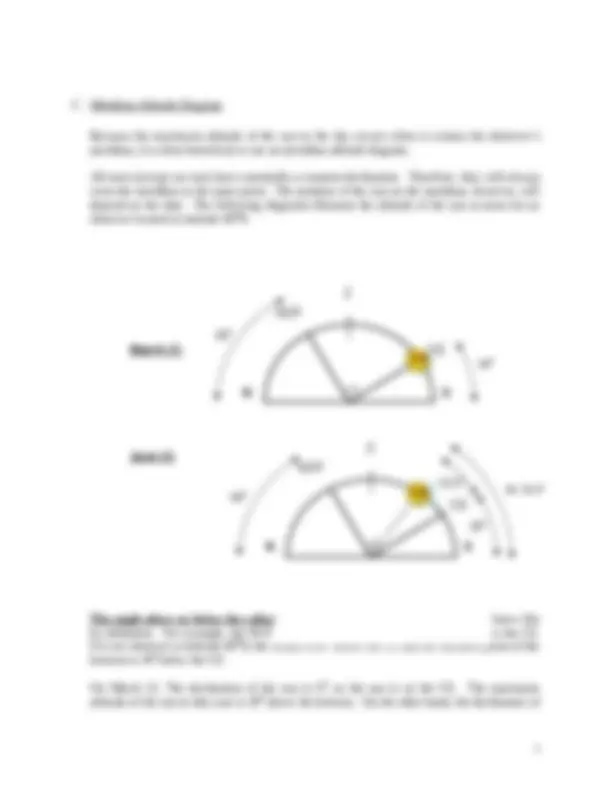
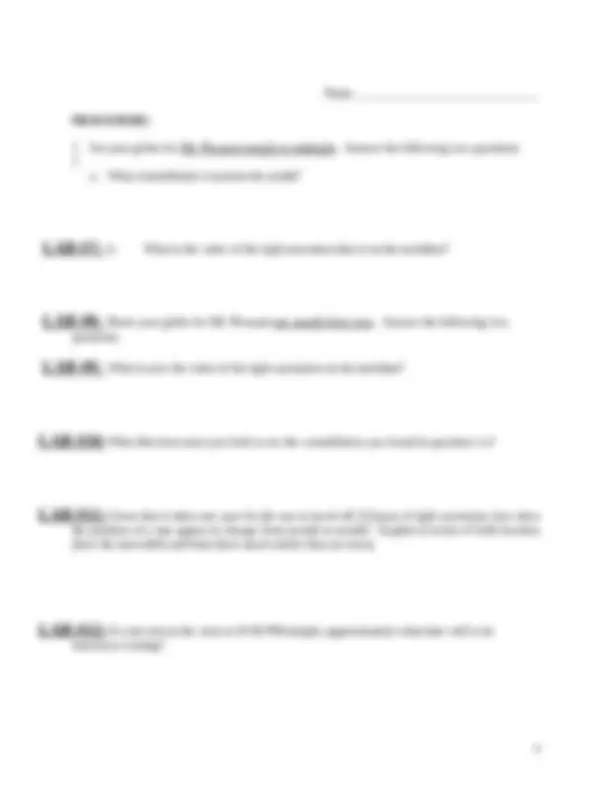
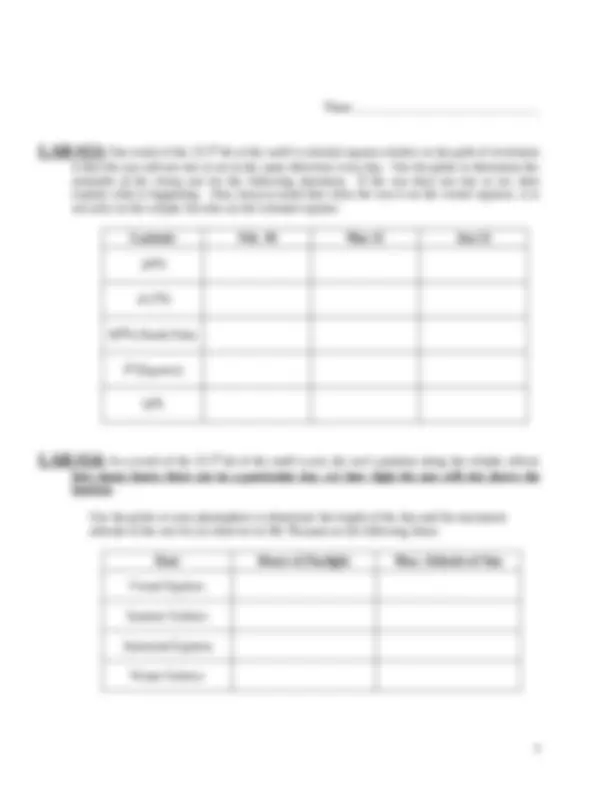
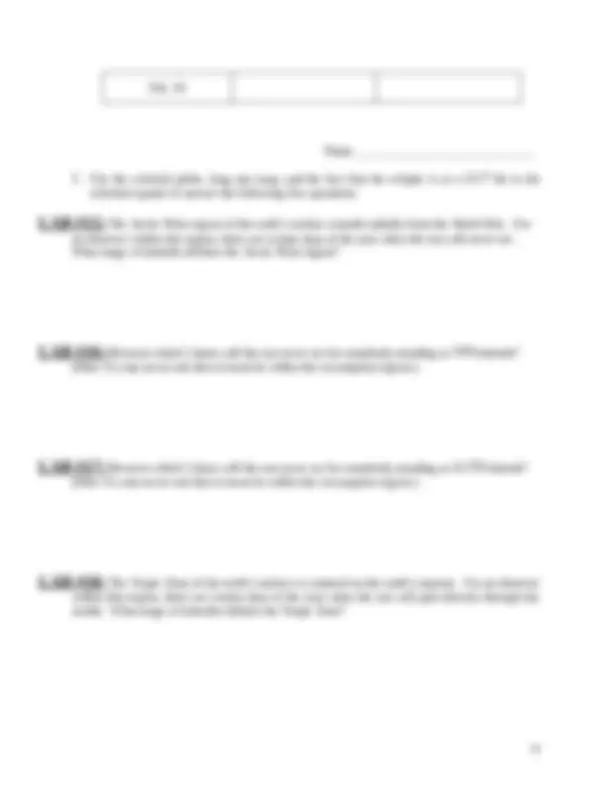


Study with the several resources on Docsity

Earn points by helping other students or get them with a premium plan


Prepare for your exams
Study with the several resources on Docsity

Earn points to download
Earn points by helping other students or get them with a premium plan
Community
Ask the community for help and clear up your study doubts
Discover the best universities in your country according to Docsity users
Free resources
Download our free guides on studying techniques, anxiety management strategies, and thesis advice from Docsity tutors
Material Type: Lab; Professor: Williams; Class: Intro to Astro Observations; Subject: Astronomy; University: Central Michigan University; Term: Unknown 1989;
Typology: Lab Reports
1 / 12

This page cannot be seen from the preview
Don't miss anything!







INTRODUCTION: Rotation and revolution together determine what stars we see and how we see them move. The earth’s rotation on its axis determines the apparent motion of the stars in a night, and also day and night. But the earth also orbits (revolves) around the sun at the same time that it is rotating. In this lab we will learn how this motion affects our observations of the sky. TYPE: Indoor MATERIALS: Notebook, pencil, long-star map, planisphere OBJECTIVES: Know the dates of the equinoxes and solstices and the coordinates of the sun on these dates. Understand the cause of the apparent gradual motion of the sky that is associated with the earth’s revolution.. Be able, given the rising or setting time for a star, to estimate the rising or setting time for some later date. Be able to explain the reasons for seasons on the earth. Know how the observer's latitude and the position of the sun determine the length of a day and the directness of the sun's rays. Be able, given the observer’s latitude, to determine the number of daylight hours on a given date using a celestial globe or a planisphere. BEFORE THE LAB: A. Revolution If you were to observe the stars at 9:00 PM on a summer evening, for example, and then look at them again at 9:00 PM at some point during the winter, you would see a very different looking sky. Some of the stars you saw in the summer would be visible and some would not, and those visible would be in different positions. The cause of this phenomena is the revolution of the earth about the sun.
We must first remember that just because it is noontime and the sun is above our horizon, that does not mean that there are no stars in the sky. It is just that we can’t see them with the naked eye because the sun is too bright. Look at the illustration above very closely. The sun is directly above the observer’s head, so it is obviously about noon time. You should be able to determine the observer's geographic north in this picture. Convince yourself that the observer, located near the equator, is facing north as he faces out of the page. As you look at the picture, you are looking directly at the earth’s north pole and facing the observer’s south. Furthermore, because the earth’s axis is pointed out of the page, this is a representation of the earth-sun system as viewed from Polaris. The earth is rotating counter-clockwise in this illustration (toward the east). The only stars the observer sees are the shaded stars, and they will only be seen once the sun is below the observer’s horizon.
NOON – Sep 21 E
MIDNIGHT – Sep 21
The figure above illustrates the effect of the 23.5 tilt of the earth’s axis. As you see, in this drawing the sun’s rays are more direct on the Northern Hemisphere than on the Southern Hemisphere. This particular position of the sun is called the summer solstice. For this case, as the earth rotates on its axis, there are also more hours of daylight in the Northern Hemisphere (the sun is above the horizon longer). If the axis of rotation were exactly perpendicular to the path of revolution, there would be NO seasons. Each location on the earth would experience the same amount of sunlight and the sun would follow the same path across the sky every day of the year. Look at the diagram and table below. Date RA DEC. Vernal Mar 21 0 hr 0 Equinox Summer Jun 21 6 hr 23.5N Solstice Autumnal Sep 21 12 hr 0 Equinox Winter Dec 21 18 hr 23.5S Solstice E Celestial Sphere NCP SCP CE Ecliptic 23.5
The sun’s perspective The earth’s perspective
C. Meridian-Altitude Diagram Because the maximum altitude of the sun in the sky occurs when it crosses the observer’s meridian, it is often beneficial to use an meridian-altitude diagram. All stars (except our sun) have essentially a constant declination. Therefore, they will always cross the meridian at the same point. The position of the sun on the meridian, however, will depend on the date. The following diagrams illustrate the altitude of the sun at noon for an observer located at latitude 60N: The angle above or below the celestial equator is the declination. We already knew this by definition. For example, the NCP is 90 above the CE and the SCP is 90 below the CE. For our observer at latitude 60N, the zenith is 60 above the CE and the southern point of the horizon is 30 below the CE. On March 21, The declination of the sun is 0; so the sun is on the CE. The maximum altitude of the sun in this case is 30 above the horizon. On the other hand, the declination of
60 30 March 21 CE
30 60 23.5 Alt. 53.5 June 21
Name_______________________________ PROCEDURE:
questions.
the position of a star appear to change from month to month? Explain in terms of both location (how the stars shift) and time (how much earlier they are seen).
tomorrow evening?
Feb. 10 Name______________________________
an observer within this region, there are certain days of the year when the sun will never set. What range of latitudes defines the Arctic Polar region?
(Hint: If a star never sets then it must be within the circumpolar region.)
(Hint: If a star never sets then it must be within the circumpolar region.)
within this region, there are certain days of the year when the sun will pass directly through the zenith. What range of latitudes defines the Tropic Zone?
effect on the temperature at the earth’s surface? Explain in terms of the Arctic Polar region and the Tropic zone. Which is warmer and why? Name_______________________________
noontime. The observer is facing out of the page to the west. Label the zenith and the north and south points on the horizon. Rule #4: what is the altitude of the SCP? __________ Of the NCP? __________ Rule #1: orient the "celestial cross". Label the parts of the cross (NCP or SCP, CE). What is the declination of the sun?__________. Determine & label the relevant angles. What is the maximum altitude of the sun?______________.